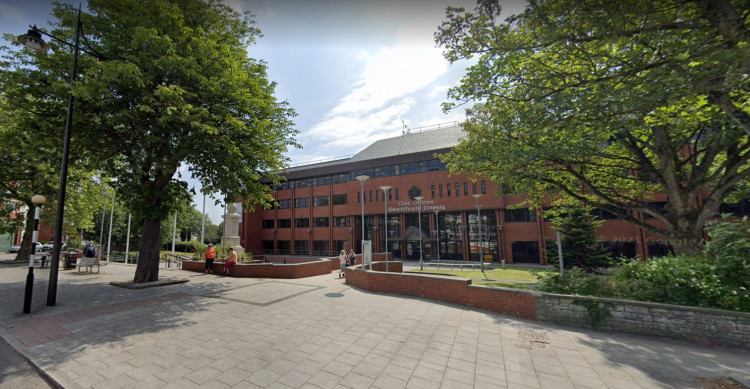Richard III: A regal rediscovery regaled to the Bont Faen WI ladies
By Guest
27th Nov 2021 | Local News

Last Thursday (November 18), Bont Faen WI welcomed Dr Rhian Morgan, Senior Education and Engagement Officer for Wales' gene park.
With her background in biomedical research Rhian captivated the WI ladies as she delivered a fascinating talk on the discovery of Richard III in a Leicestershire car park back in 2012.
Rhian began her talk with a brief history of Richard III and his contentious claim to the English throne through the House of York.
The final ruler of the Plantagenet dynasty was killed on August 20, 1485 during the final battle of the War of the Roses, the Battle of Bosworth.
He was the last English King to be killed in battle and suffered a gruesome, violent death with heavy blows to his head.
Stripped naked and publicly displayed as proof he was truly dead, the King's body was subsequently buried in a crude grave in the choir of the Grey Friars church, a Priory for Franciscan monks in Leicester.
With the dissolution of the monasteries during Henry VIII's reign, Grey Friars was demolished and the land sold to two Lincolnshire property speculators, later acquired by Robert Herrick, the Mayor of Leicester.
Having built a grand mansion and gardens on the site, Herrick erected a stone pillar, stating: Here lies the body of Richard III, sometime Kind of England."
Over the next 200 years this pillar disappeared, allowing stories and myths to abound as to the whereabouts of the King's remains. The site was increasingly built upon throughout the nineteenth century, with a large staff car park laid on the site of Herrick's mansion in 1944 following acquisition of the land by Leicestershire County Council.
The wheels to this one regal rediscovery were set in motion in 2011 when The Richard III Society sought permission from Leicester City Council and the University of Leicester Archaeological Society to dig beneath the car park.
Despite slim chances their search for remains of the Grey Friars church, the choir and ultimately Richard III would succeed, the dig began in August 2012 and quickly located the church and the choir area, in which lay the skeleton of a male approximately 5ft 8 inches tall.
The skeleton was marked with battle scars – particularly on the scull – and had a curved spine. Both feet were missing, and the hands were together on the right hip, as though bound. There was no shroud, suggesting a speedy burial without ceremony.
Using cutting edge technology in laboratories, close analysis of the bones revealed lethal injuries on the skull, with distinct scuff marks from the blade of a sword and a vicious blow to the top of the head that pushed the skull down. A sharp blow to the crown of the head was identified.
Numerous stabbings and cuts to a rib and the pelvis from behind suggested the body had been stripped of its armour and attacked after death in a form of public humiliation, all of which is in keeping with historical accounts regarding Richard III.
While not quite the "hunchback" Shakespeare portrayed Richard III as in his eponymous play, one should was higher than the other.
The curvature of the spine or scoliosis also fitted contemporary descriptions of the King, who was 32 years old when he died. Analysis of the bones identified they belonged to a between 30-34 years old.
One final piece of the puzzle identifying the skeleton remained at large though, with radiocarbon dating that placed the bones as alive between 1475 and 1530 – dates that did not correspond to Richard's life.
Following further tests on the bones, mass spectrometry indicated the male had enjoyed a high seafood diet, something that makes radio carbon dates appear older.
This was confirmed by an isotope analysis of nitrogen, oxygen and carbon in the bones and the teeth, which gave evidence of a diet rich in protein that included large quantities of wine – a "diet fit for a king".
All evidence pointing towards the skeleton as being that of Richard III, confirmation came from mitochondrial DNA extracted from the skeleton then tracked via genealogical research through the female descendants of Richard III, starting with his mother Cecily Neville.
After 2 years and a stroke of good luck, a British woman in Canada who had traced her ancestry emerged as a direct descendant of Richard's sister, Anne of York.
While the lady had died in 2008, a mouth swab taken from her son matched that taken from the skeletal remains – providing a DNA match between the descendants of Richard III's family and the skeleton.
With all the scientific and historical analyses taken into account, the University of Leicester finally announced on February 4, 2013, that it considered it beyond reasonable that the body found at Grey Friars Church was that of Richard III.
Three years after the skeleton was found, the moral remains of Richard III were reburied in Leicester Cathedral on March 26, 2015.
New cowbridge Jobs Section Launched!!
Vacancies updated hourly!!
Click here: cowbridge jobs
Share:


